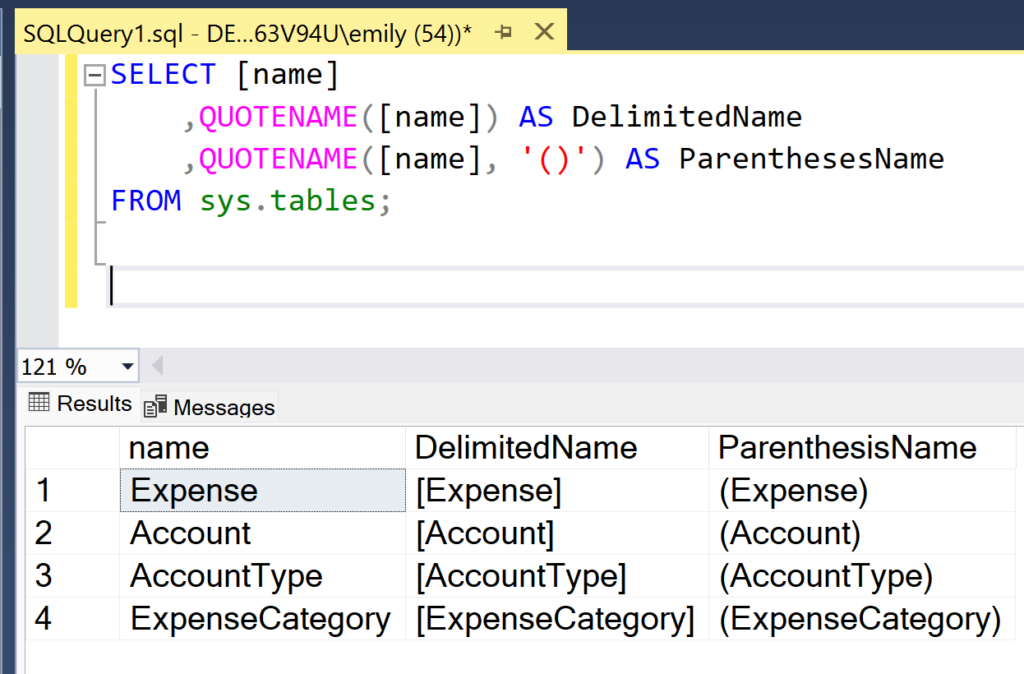I have a short post today because I’ve gotten a little behind on my editing and want to get something out today. This week, I learned about the most useful little string function available in SQL Server that I wish I had known about previously. The function is QUOTENAME()which isn’t the most intuitive name for a function.
What’s in this post
Overview of QUOTENAME()
What the function QUOTENAME() does is put delimiters around a string, which is especially useful for certain columns in your queries. Where this comes in handy are scenarios where you are going to use the outputs of your SQL queries in other future queries, so having the strings delimited to meet SQL Server standards is essential.
For example, say you want to generate a list of the tables in your database and then you are going to use that list of table names in another query, so you would like the table names to be surrounded with square brackets–a SQL Server best practice. Instead of manually adding the brackets yourself, which I have done too many times to count, you can use the QUOTENAME() function that will do it for you. This function will also let you specify other delimiters, like parentheses, if you would like that instead. There are other delimiters you are allowed to specify, more than I was expecting, so check out the W3Schools page on the function for more details.
Demo of the function
Here is a demonstration of the function being used on the [name] column of the sys.tables table.
SELECT [name]
,QUOTENAME([name]) AS DelimitedName
,QUOTENAME([name], '()') AS ParenthesesName
FROM sys.tables;
QUOTENAME() function: one with the default setting of square brackets and one specifying the parentheses.In the example above, I have displayed the normal [name] column from the table and then used the same QUOTENAME() function two different ways. The first usage of the function only inputs the column that I want to be delimited, which then gets the default delimiter of square brackets. If you, however, would like to use a different delimiter, like parentheses, you can specify that as the second parameter to the function. In my testing, you can specify QUOTENAME(column, '('), QUOTENAME(, or column, ')')QUOTENAME( and they all give you the same parentheses delimiting.column, '()')
Summary
If you often find yourself manually putting bracket delimiters around values you retrieve from SQL Server with queries, please consider using the QUOTENAME() function in the future instead to save yourself time and manual effort. I know I will for sure be using this now.

